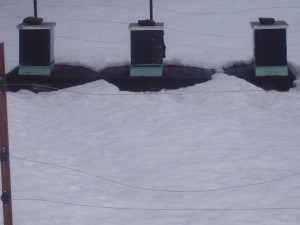Hello and welcome to The Backyard Buzz!
My name is David Avvisato and along with my wife Anita we have been keeping bees for the past seven years in Northeastern Pennsylvania. Actually, I don’t know if we are really keeping bees or just providing temporary housing as they seem to come and go as they like, but we have tried our best to help our hives make it through the harsh Pennsylvania winters and thrive throughout the warmer months.
In the Backyard Buzz, I would like to share helpful tips we have learned through trial and error over the last seven years working with bees.
As of Friday March 13th, all of our hives have been opened and inspected for winter survival and available food, and I am very happy to report that 14 out of 16 hives are alive, with 10 out of the 14 surviving hives loaded with bees. With having the coldest and longest winter of any we have experienced since keeping bees, I am very surprised to see such a high survival rate.
With many nights of below zero temperatures this winter, I believe the high survival rate can be attributed to three things we did to help prepare the hives to make it through a harsh winter. The three most important steps we took to help with bee survival this winter were: (1) treat for mites and nosema, (2) provide more than enough food, and (3) and protect hives from moisture and wind. Since this first column is just an introduction, I will go into the three steps in more detail once I actually break down the surviving hives in the next few weeks and inspect them in more detail.
Finally, the best tip I can leave you with now is to make sure there is still plenty of feed left in the hives for the bees to eat now. March is a very difficult time for bees, as the days start to warm some but the nights can still become very cold in the Northeast. Without any natural sources of food available yet, it is up to us as beekeepers to feed our bees now.
Since our nights in Pennsylvania still dip below freezing, we do not feed sugar water yet. Instead, I make sure every hive has some type of pollen or food patty on it to help feed the hive as they are now in the process of building up numbers for warmer weather.
If you lucky enough to be in a warmer area, I recommend feeding sugar water with some bee health additive at a rate of 2 parts sugar to 1 part water, and keep feeding this mixture until natural food is available.
I hope you enjoyed The Backyard Buzz for this week and thanks for listening.
Keep Them Buzzing!!
Dave











3 Comments
what is a food patty?
I have 5 hives and mine also survived,I didn’t loose any.I live in canajoharie,NY. I did wrap my hives for the winter and treated them before winter and I also left an extra box on all my hives so I really and truly believe it did help them. I have been up there and gave them bee pollen and sugar..
I loved the article !!!!
Thanks